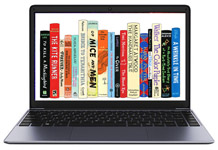E-JASL: The Electronic Journal of Academic and Special Librarianship
Date of this Version
Winter 2007
Document Type
Article
Citation
Electronic Journal of Academic and Special Librarianship (Winter 2007) 8(3). Also available at http://southernlibrarianship.icaap.org/content/v08n03/linberger_p01.html.
Abstract
Introduction
“While the principles of collection development, which were developed in the world of print publications, do not change radically with new publishing technologies, methods of decision making and specific selection guidelines must be adjusted significantly to incorporate new publishing formats” (Demas).
The goals of acquiring and maintaining a good collection of resources that directly benefit teaching and research at a university are important ones. It is nearly impossible for most library budgets to acquire every available electronic research database and the task of deciding which of these resources to purchase has been mostly left to librarians. In order to have a tool that would aid librarians in determining which electronic resources to acquire, the University of Akron Libraries developed an “Electronic Resources Previews Project Page” and introduced it on the library’s Web site in February 2005. The purpose of the Previews Project is to involve faculty, students, and librarians together in the evaluation and assessment of new electronic resources.
With the volume and variety of research information becoming available electronically, the librarians at the University of Akron needed a more efficient way of keeping track of what is available and what information these resources provide. Previously, vendors and publishers would contact any number of librarians and offer a temporary trial of their product; after that the subject librarians would notify other colleagues and various teaching faculty with the logon and trial information. These librarians and faculty were then asked to logon and try out the resource and report their opinion on its value. The subject librarians would then forward the information to the Head of Collection Management who would consider these resources for possible purchase depending on the opinions and available funds. This was typically done through a series of email messages and phone conversations, and there was no consistent procedure in place. Trials on a number of electronic resource databases have also been available through the statewide consortium, OhioLINK. A procedure was needed to have a consistent way of arranging for and handling trials of electronic resources, and more importantly, having all the information in one place where librarians, faculty and students could have easy access for previewing and evaluating. Use of the Previews Project page by the Head of Collection Management would ensure an organized and systematic file of previewed electronic resources.
With the creation and hiring of a new library position in 2004 (Electronic Resources Librarian), the Associate Dean of University Libraries envisioned the design and implementation of a Web-based tool for evaluating new electronic resources. After the initial plan was written the Associate Dean, the Head of Collection Management, and the Electronic Resources Librarian met to discuss and draw a workflow diagram for the creation, implementation and use of this new Web-based tool which became known as the “e-Resources Previews Project.” The goals and outcomes of this project are as follows: 1) develop a new and easy Web-based evaluation instrument for faculty, librarians, and students to assess individual electronic resources; 2) assess the potential use of a new resource by faculty and students prior to committing financial resources; 3) gather documentation from faculty and students to use as support for any additional funding requests; 4) develop methods for active collaboration between librarians and teaching faculty for using the resources in promoting student success via classroom assignments; 5) use the information gathered from librarians, faculty, and students to help with purchasing decisions; and 6) acquire the best resources and promote their use on campus.
Included in
Collection Development and Management Commons, Communication Technology and New Media Commons, Higher Education Commons, Scholarly Communication Commons, Scholarly Publishing Commons


Comments
Copyright 2007, the authors. Used by permission.